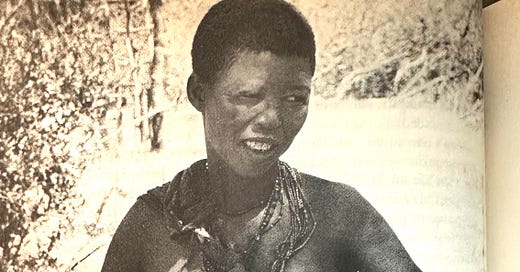So I’m writing a book, and it’s really, really hard. Who knew? One thing that I am always being asked to do is explain why my research on hunter-gatherers is relevant for my readers: presumably Western moms living in the 21st Century. Sometimes this is obvious, and sometimes it’s not. Sometimes I happen across a piece of research and I’m just like, wow, that is so freaking interesting, but I have no idea why.
Take breastfeeding and birth spacing.
I talk a lot about how the average interbirth interval in hunter-gatherer societies is typically about 4 years - twice as long as my own interbirth interval (my kiddos are less than 2 years apart). The reason for this is probably not abstinence or use of medicinal plants. Some hunter-gatherer societies have taboos on sexual intercourse following the birth of a baby, but these generally do not last long and are not always respected. On the contrary, hunter-gatherers appear to have quite a lot of sex. Among the !Kung, it is said that a person who has not had sex in a long time is “starving.” Women have strong sexual appetites, just like men, and insist on their sexual pleasure. Having sex and talking about sex, and who is having sex with whom, appears to occupy a good deal of hunter-gatherers’ mental space. As for plants, women in nearly all hunter-gatherer societies express a desire to have more control over their fertility, and claim to know of certain plants that can repress fertility or induce abortion, but scientific investigation into such plants has not supported their efficacy.
A more likely explanation for the longer interbirth intervals in hunter-gatherer societies is breastfeeding patterns. Hunter-gatherer mothers breastfeed more frequently, and for longer, than most Western mothers. Among the !Kung, in the first year of a baby’s life, mothers breastfeed their babies on demand, once every thirteen minutes on average, for about two minutes at a time! They also sleep with their babies at night and babies self-serve from the breast at will. In interviews of young !Kung mothers with breastfeeding infants, they reported babies feeding “often,” or “many times,” - too many to remember or count.
What’s fascinating about this pattern of frequent, on-demand breastfeeding is that it appears to have a significant effect on mothers’ hormonal profiles.
Keep reading with a 7-day free trial
Subscribe to MOTHERHOOD UNTIL YESTERDAY to keep reading this post and get 7 days of free access to the full post archives.




